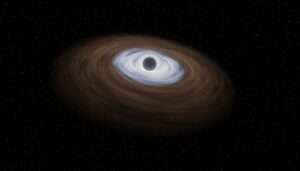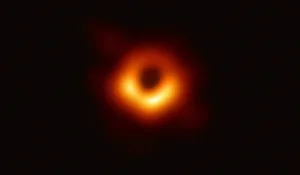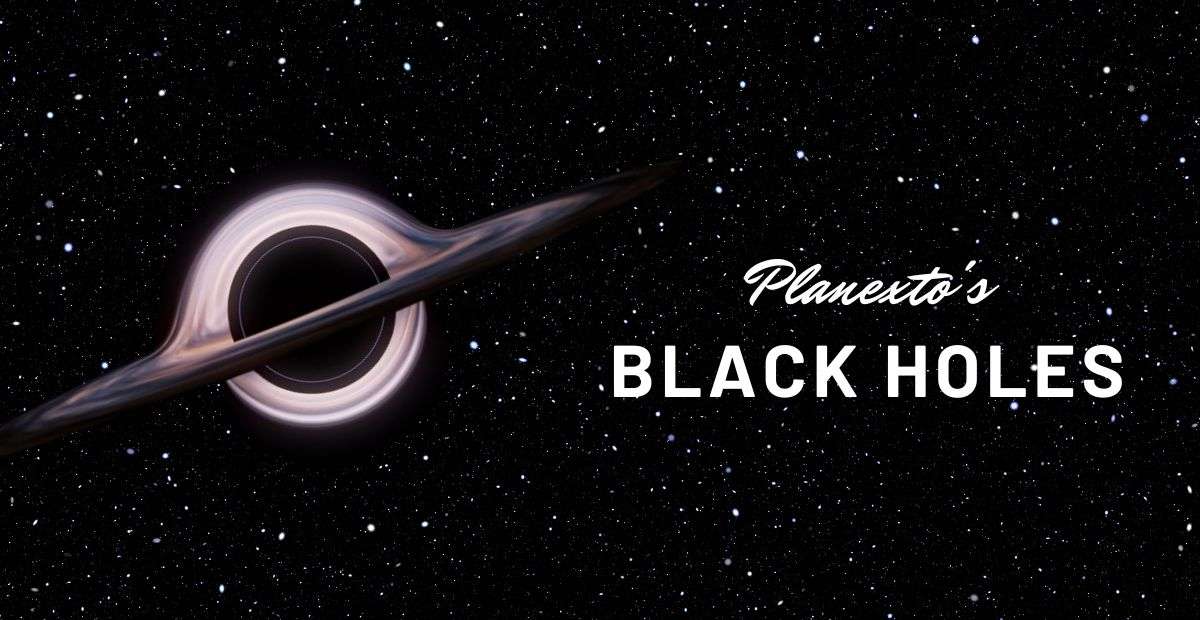Hey star-watchers! Let me tell you about one of the coolest mysteries in the cosmos: Black holes! Imagine a region of space where gravity is so intense that nothing can escape from it, not even light. That’s a black hole for you! Get ready to dive into the fascinating world where space and time get all warped and twisted. They are like the mysterious rockstars of space, and their secrets are just waiting to be decoded!

Formation: The Birth of Black Holes
They can form in different ways, but the most common genesis is the dramatic collapse of massive stars. When such a star exhausts its nuclear fuel, it undergoes a supernova explosion. If the remaining core is super massive (typically at least 10 times the mass of our Sun), it contracts further under gravity’s relentless pull, giving birth to a black hole.
Singularity and Event Horizon
At the heart of a black hole lies a singularity, a point of infinite density where the laws of physics as we know them break down. Surrounding the singularity is the event horizon, an invisible boundary beyond which escape becomes impossible. Once an object crosses this boundary, it is inevitably pulled toward the singularity, disappearing from our observable universe.

Types of Black Holes: A Cosmic Hierarchy
Stellar-Mass Black Holes
These black holes, which are the result of enormous star collapses, are usually a few to tens of times as big as the Sun
Intermediate-Mass Black Holes
Found in the mass range of hundreds to thousands of solar masses, their origins remain a subject of debate.
Supermassive Black Holes
These colossal entities, residing at the centers of galaxies, can weigh millions to billions of times more than our Sun. Their formation remains a cosmic mystery, likely dating back to the early universe.
Effects on Nearby Objects: A Dazzling Display
As matter spirals into a black hole, it forms an accretion disk, emitting intense radiation across the electromagnetic spectrum, including X-rays and gamma rays. Some black holes are observed as X-ray binaries when they are in close proximity to a companion star.
Hawking Radiation: A Subtle Emission
Stephen Hawking’s theory proposes that black holes can emit Hawking radiation, a phenomenon suggesting they can gradually lose mass and eventually evaporate over extraordinarily long timescales.
The Dance of Spacetime:
Einstein’s theory of general relativity. According to this theory, massive objects, such as black holes, have the ability to warp the fabric of spacetime. Being exceptionally dense and possessing intense gravitational fields. Within the gravitational understanding of a black hole, the fabric of spacetime undergoes significant distortion. This distortion represents in phenomena like time dilation, where time itself appears to slow down in the intense gravitational field. Another captivating effect is gravitational lensing, a phenomenon wherein the gravitational field of the black hole causes light to bend as it passes in vicinity, essentially creating a lensing like effect. Consequently, observers perceive distorted and curved paths of light around the black hole.

Scientific Research: A first ever image of Black hole
The Event Horizon Telescope captured the first image of a black hole in April 2019. Located in the center of the galaxy Messier 87, the black hole, named M87. It is a supermassive black hole 55 million light-years away from Earth. The image revealed a bright ring of emission around a dark central region, confirming the existence of a black hole and aligning with theoretical predictions.

Conclusion
In conclusion, black holes are like the rockstars of the cosmos! They’ve got this crazy gravitational pull that nothing can escape, not even light. Wrapping your head around them challenges our understanding of physics, making them a hot topic in the world of science that everyone finds fascinating!. Now let’s find out the journey into Black holes.
FAQs
Q: Are Black Holes Inevitable?
A: Yes, They are a natural outcome of massive stars reaching the end of their life cycles. When they collapse under their gravity, a black hole is born.
Q: Can Anything Escape a Black Hole?
A: Once past the event horizon, nothing, not even light, can escape a black hole’s gravitational pull. It’s a point of no return in the cosmic dance.
Q: Do Black Holes Die?
A: While black holes seem eternal, they can theoretically shrink and vanish through Hawking radiation, a slow process that takes unimaginable epochs.
Q: Could We Ever Travel Through a Wormhole?
A: Theoretically possible, traversing a wormhole requires overcoming colossal challenges, from stabilizing the passage to avoiding the destructive forces within.
Q: How Do Black Holes Impact Time?
A: Near a black hole, time dilation occurs—a consequence of intense gravity. Time moves slower for an observer closer to the black hole compared to one farther away.
Q: Can Black Holes Merge?
A: Yes, They can merge when they orbit each other. This gravitational dance creates ripples in spacetime, known as gravitational waves, detected by advanced observatories.









7 thoughts on “Black Holes Demystified: Exploring the Enigma of Black Holes”